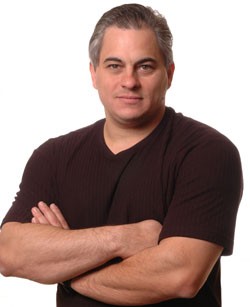
"Do I Need Skin Care?"
- What exactly is a Peel?
Facial peels are procedures that can improve:
- Pigment Changes - In general these are related hyperpigmentation or "splotchiness" and can be a function of sun exposure, pregnancy and/or oral contraceptive use.
- Fine Wrinkling - Skin, as a result of aging, cigarette smoking and/or sun exposure, can obtain wrinkles. Peels can improve some of these wrinkles particularly the finer ones.
- Acne and Old Acne Scarring - Lighter peels can be used to keep acne under control. The scarring for acne of years gone by can be improved by heavier peels.
There are many types of Peels
This is probably the most confusing point for the potential patient. Various peel formulations offer specific combinations of effectiveness, the need for pre and post-operative skin preparations, down time, the need (or lack of need) for anesthesia, and cost. As you might imagine, the heavier peels tend to require anesthesia, involve more down time as the skin heals and cost more. They also tend to be more effective. In general, the best peel for a given individual relates to this compromise of cost, downtime and peel strength as well as the issue the patient would like improved.
Some women prefer to have more of the lighter peels that require less downtime whereas others will take one or two of the heavier variety and get the same result.
A Little about Peel Types
(1) Glycolic, Lactic and other Fruit Acid Peels - There are some that have traced the use of fruit acid-based peels to the time of Cleopatra. These are light peels that are applied and are later washed away. After the peel, there may be flaking of the skin or a light skin slough over a 3-5 day period. They are commonly applied in salons as well as doctor's offices as they do not require anesthesia. The heavier varieties simulate weaker TCA peels (below). These peels are commonly applied in a series as one peel affords little change. They can be useful in keeping acne under control in the adolescent as well as improving texture and mild hyperpigmentation. Personally, I use a moderate to heavy Glycolikc peel on myself 2-4 times a year.
(2) Crystal Peel, Power Peel, and like Varieties - These are recently developed systems involving the use of a vacuum device and a crystal agent. The vacuum draws the crystals across the skin effecting a light abrasion. In essense, these are lighter versions of dermabrasion or "sanding" of the skin. Downtime is very short as the skin following a treatment looks a little dry or irritated but not very damaged. In depth, these peels are probably much akin to the above Fruit Acid Peels. They are commonly applied in a series as one peel affords little change.
(3) TCA Peels - Trichloroacetic Acid Peels have been used since the sixties. They come in light as well as heavier varieties. The light peels do not require anesthesia and the heavier ones absolutely do. Lighter TCA will provide a light skin peel and the heavier varieties will cause larger sheets of skin to peel off. The time to slough and have an early healing skin layer can be 5-7 days for the lighter and 7-9 days for the heavier TCA peels. These peels (particularly the heavier ones) are best when a pre and post-operative skin care regimen is applied.
(4) CO2 Laser Re-surfacing - Laser re-surfacing was introduced in the nineties and was very popular for a few years. It is a medium to heavy treatment requiring anesthesia. The superficial epidermis is actually vaporized and the deeper dermis is heat treated affecting a contraction which works to reduce wrinkling. A fair amount of skin sloughs. The time to slough and have an early healing skin layer is usually 7-10 days. These peels are best when a pre and post-operative skin care regimen is applied. Post-operative skin redness (really an effect of the healing skin) can last for weeks to months but can be camouflaged using makeup after the initial healing period of 7-10 days. These deep peels can offer nice improvements in facial wrinkles and old acne scarring.
Complications
Probably the leading complaint is that the peel did less than desired. The wrinkles and hyperpigmentation are still there. This is more commonly assessed in the case of using lighter peels or having a great deal of sun damage. It is not uncommon to re-apply a peel at another sitting to get a better result. The lighter peels are frequently used as maintenance for the heavier ones. Various creams and treatments are helpful for maintenance as well. Skin damage is usually a continuing process, so don't go in thinking you will do one peel and everything will be fixed forever.
General Skin Care
There is quite a bit you can do about your complexion short of a peel. In fact, part of most peel programs involve the use of a number of creams and skin conditioners. The most basic skin care program should involve a quality sun screen and bleaching cream for pigment control. These help limit sun damage and establish and maintain even pigmentation respectively.
Why Should I Consider Dr Di Saia
Dr Di Saia is a double board certified Plastic Surgeon who had been involved in skin care (personally and professionally) since 1996. He performs light as well as heavier peels and is soon to add a medical aesthetician to his office staff to increase the availability of this kind of expert care.
FACIAL COSMETIC MAIN
| WEB SITE MAIN | QUESTIONS INDEX |
BASIC SKIN CARE | FEES and FINANCING
© John Di Saia, MD... an Orange County
California Plastic Surgeon 
(949) 369-5932


